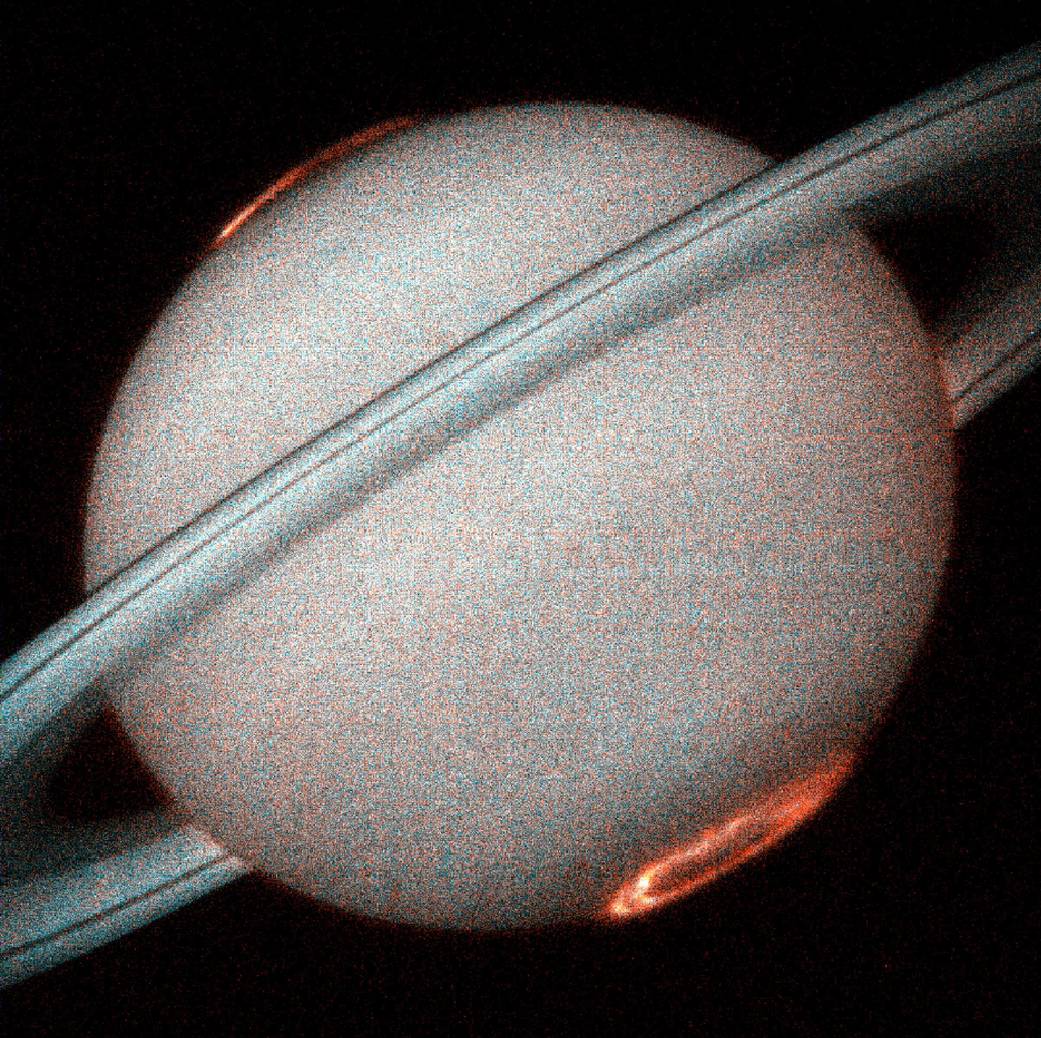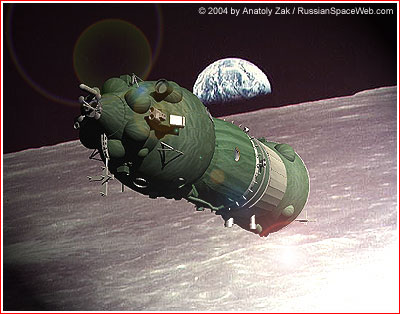The huge NASA Image Archive is now online.
The site is divided into sections: Images, Video and Audio but the content is also indexed.


The huge NASA Image Archive is now online.
The site is divided into sections: Images, Video and Audio but the content is also indexed.

 From the NASA site, last news about the Cassini mission.
From the NASA site, last news about the Cassini mission.
An aurora, shining high above the northern part of Saturn, moves from the night side to the day side of the planet in this movie recorded by Cassini.
These observations, taken over four days, represent the first visible-light video of Saturn’s auroras. They show tall auroral curtains, rapidly changing over time when viewed at the limb, or edge, of the planet’s northern hemisphere. The sequence of images also reveals that Saturn’s auroral curtains, the sheet-like formations of light-emitting atmospheric molecules, stretch up along Saturn’s magnetic field and reach heights of more than 1,200 kilometers (746 miles) above the planet’s limb. These are the tallest known “northern lights” in the solar system.
These auroral displays are created by charged particles from the magnetosphere that plunge into the planet’s upper atmosphere and cause it to glow. The magnetosphere is the region of electrically charged particles that are trapped in the magnetic field of the planet. The auroral curtains shown in the movie reveal the paths that these charged particles take as they flow along lines of the magnetic field between the planet’s magnetosphere and ionosphere.
The day side of Saturn scatters light toward Cassini, creating the overexposed triangle at the center of the left of the frame. Stars can be seen above the limb of the planet, trailing across the field of view.
 In the August and September 1977, two Voyager spacecraft were launched to fly by and explore the great gaseous planets of Jupiter and Saturn.
In the August and September 1977, two Voyager spacecraft were launched to fly by and explore the great gaseous planets of Jupiter and Saturn.
Voyager I, after successful encounters with the two, was sent out of the plane of the ecliptic to investigate interstellar space.
Voyager II’s charter later came to include not only encounters with Jupiter (1979) and Saturn (1981), but also appointments with Uranus (1986) and Neptune (1989).
The Voyagers are controlled and their data returned through the Deep Space Network, a global spacecraft tracking and communications system operated by the JPL for NASA.
Although space is a virtual vacuum, this does not mean there is no sound in space. Sound does exist as electronic vibrations. The especially designed instruments on board of the Voyagers performed special experiments to pick up and record these vibrations, all within the range of human hearing.
These recordings come from a variety of different sound environments, e.g. the interaction of the solar wind with the planet’s magnetosphere; electromagnetic field noise; radio waves bouncing between the planet and the inner surface of the atmosphere, etc.
In 1993 NASA published excerpts from these recordings in a set of 5 CD (30 minutes each) called Symphonies of the Planets (now out of print).
This is the CD 1.
…se, invece degli Stati Uniti, la corsa alla luna l’avessero vinta i russi. In realtà il loro progetto era troppo complesso e cervellotico per prevalere (es: un vettore a 5 stadi invece di 3, con 30 piccoli motori).
Però dal punto di vista estetico non c’è confronto. Lo steampunk retrò dei sovietici era impagabile…

“We choose to go to the Moon” sono le storiche parole pronunciate dal pres. JFK nel Settembre 1962 per annunciare il varo del programma che avrebbe portato l’uomo sulla Luna alle 20:17:40 UTC del 20 Luglio 1969 (le 2 del 21 Luglio in Italia), 40 anni fa.
Circa 6:30 ore dopo l’allunaggio, alle 2:56 UTC del 21 Luglio, Armstrong posò il piede sul nostro satellite e fece il suo grande passo per l’umanità.
Fra le moltissime iniziative commemorative, vi segnalo we choose the moon, un sito che propone una simulazione in computer graphic e in tempo reale dell’intera missione, con spezzoni dell’audio originale e varie immagini.
La nascita, la vita e la morte di una stella di classe G, come il sole. 12 miliardi di anni in 6 minuti.
Video bello e professionale, musica bruttina e inadatta. Meglio il silenzio.
… meraviglioso! Questa immagine è di una bellezza da togliere il fiato.
Si tratta di NGC 7331. Dista 50.000.000 di anni luce da noi ed è una fucina di stelle. È stata fotografata da Vincent Peris usando il telescopio da 3.5 metri dell’Osservatorio di Calar Alto in Spagna.
Questa immagine impressionante (cliccatela per vederla ad alta risoluzione), mostra nel riquadro ingrandito, il Phoenix Mars Lander in fase di atterraggio con il suo paracadute, che passa davanti al cratere Heimdall.
Nonostante possa sembrare che la sonda stia scendendo nel cratere, non è così. Si tratta di un effetto prospettico. In realtà il cratere dista circa 20 km dal punto di atterraggio.
in quest’altra bellissima immagine, invece, si vede Phoenix felicemente atterrata, accanto al paracadute sganciato e il punto di impatto dello scudo termico, anche lui abbandonato.
Le foto sono state scattate dal Mars Reconnaissance Orbiter.
Forse penserete che io sia un po’ esaltato, ma per uno che mastica fantascienza fin da bambino, queste immagini sono emozionanti. Mi spiace solo che non ci sia nessun umano e che arrivino così tardi. Le aspettavo molto prima e da piccolo immaginavo che da grande avrei potuto passare un po’ di tempo almeno in una base lunare. Peccato…
 Dopo una decelerazione da brivido (da 20.000 km/h a 8 km/h in circa 7 minuti), Phoenix Mars Lander è atterrato non lontano dal polo nord di Marte, in una regione chiamata in codice “Green Valley” che, secondo i dati pervenuti dalle sonde attualmente in orbita attorno al pianeta, contiene una notevole quantità di acqua ghiacciata.
Dopo una decelerazione da brivido (da 20.000 km/h a 8 km/h in circa 7 minuti), Phoenix Mars Lander è atterrato non lontano dal polo nord di Marte, in una regione chiamata in codice “Green Valley” che, secondo i dati pervenuti dalle sonde attualmente in orbita attorno al pianeta, contiene una notevole quantità di acqua ghiacciata.
La missione ha due obiettivi, il primo è lo studio della passata presenza di acqua sul pianeta, un’informazione chiave per comprendere i passati cambiamenti climatici del pianeta. Il secondo obiettivo è la ricerca di zone vivibili sul pianeta. Gli strumenti della Phoenix sono progettati per studiare i cambiamenti dell’artico marziano. La regione dove è atterrata Phoenix è troppo fredda per permettere all’acqua di esistere in forma liquida ma ogni 50.000 anni per via delle periodiche modificazioni dell’orbita di Marte la regione diventa abbastanza calda per fondere l’acqua e in queste condizioni se la vita esiste potrebbe svilupparsi. La missione vuole verificare l’esistenza o meno della vita su Marte. Questa missione segue la strategia NASA di far ricerche “seguendo” l’acqua.
Dotata di un braccio meccanico in grado di scavare per a mezzo metro nel permafrost marziano, fino a raggiungere il ghiaccio, il sogno è che Phoenix possa identificare un qualche cenno di vita, anche in epoche remote.
Per ora, abbiamo già qualche magnifica immagine, come quella a sinistra (cliccatela), colorata dalla NASA in base ai dati provenienti dai filtri violetto e infrarosso (l’originale è in bianco/nero con filtri su varie lunghezze d’onda).
Per avere una idea di come la scienza può far sognare, andate a vedervi questo breve video ripreso da bordo di una sonda giapponese, fatto con l’HDTV.
Segnalato da Carletto Darwin